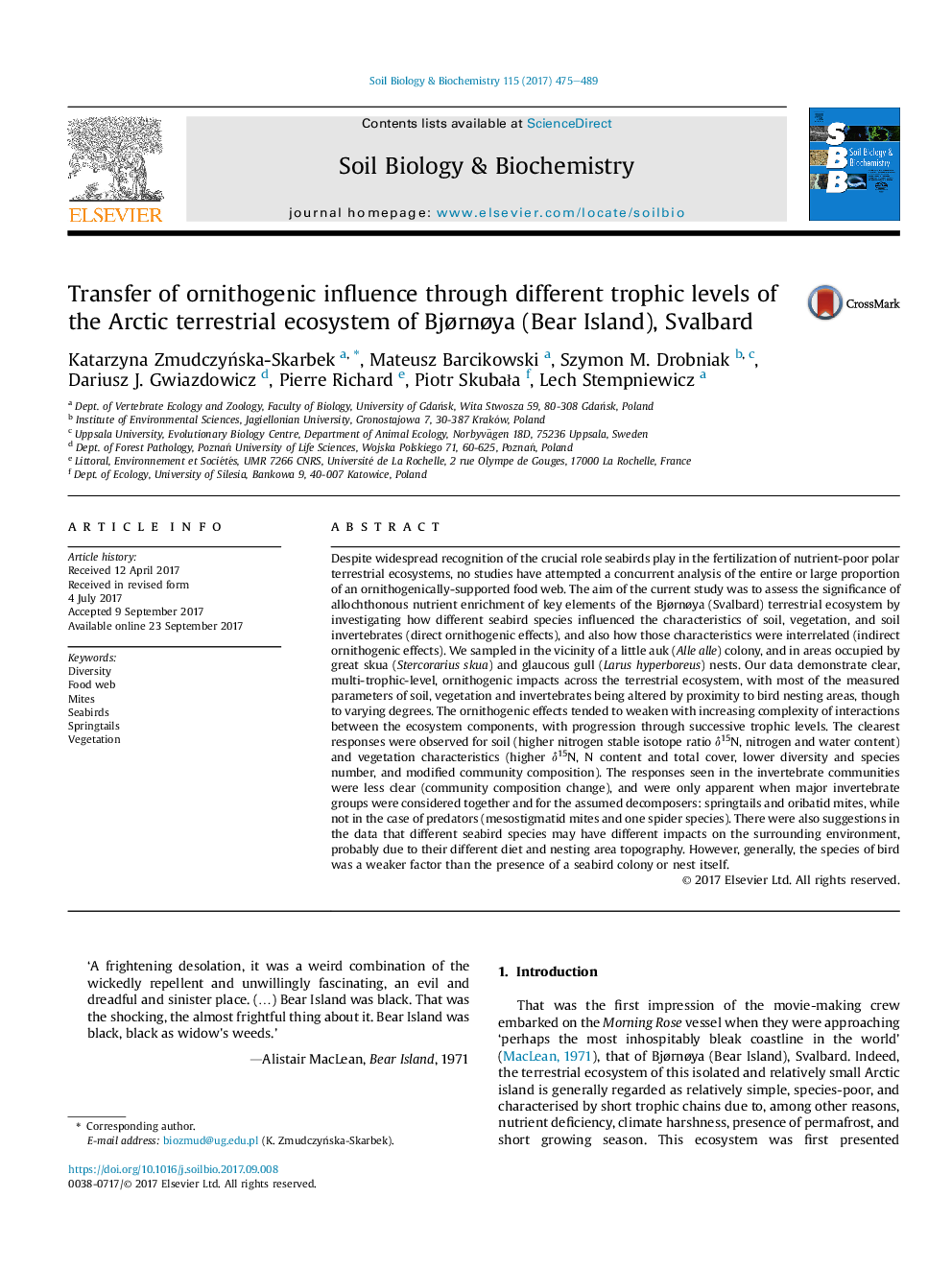| کد مقاله | کد نشریه | سال انتشار | مقاله انگلیسی | نسخه تمام متن |
|---|---|---|---|---|
| 5516269 | 1542569 | 2017 | 15 صفحه PDF | دانلود رایگان |

- Ornithogenic effects weaken with progression through successive trophic levels.
- The clearest responses to the seabird impact observed for soil and vegetation.
- Less explicit reactions demonstrated by invertebrate decomposer communities.
- No changes recorded in invertebrate predator communities.
- Different seabird species may have different impacts on the surrounding environment.
Despite widespread recognition of the crucial role seabirds play in the fertilization of nutrient-poor polar terrestrial ecosystems, no studies have attempted a concurrent analysis of the entire or large proportion of an ornithogenically-supported food web. The aim of the current study was to assess the significance of allochthonous nutrient enrichment of key elements of the Bjørnøya (Svalbard) terrestrial ecosystem by investigating how different seabird species influenced the characteristics of soil, vegetation, and soil invertebrates (direct ornithogenic effects), and also how those characteristics were interrelated (indirect ornithogenic effects). We sampled in the vicinity of a little auk (Alle alle) colony, and in areas occupied by great skua (Stercorarius skua) and glaucous gull (Larus hyperboreus) nests. Our data demonstrate clear, multi-trophic-level, ornithogenic impacts across the terrestrial ecosystem, with most of the measured parameters of soil, vegetation and invertebrates being altered by proximity to bird nesting areas, though to varying degrees. The ornithogenic effects tended to weaken with increasing complexity of interactions between the ecosystem components, with progression through successive trophic levels. The clearest responses were observed for soil (higher nitrogen stable isotope ratio δ15N, nitrogen and water content) and vegetation characteristics (higher δ15N, N content and total cover, lower diversity and species number, and modified community composition). The responses seen in the invertebrate communities were less clear (community composition change), and were only apparent when major invertebrate groups were considered together and for the assumed decomposers: springtails and oribatid mites, while not in the case of predators (mesostigmatid mites and one spider species). There were also suggestions in the data that different seabird species may have different impacts on the surrounding environment, probably due to their different diet and nesting area topography. However, generally, the species of bird was a weaker factor than the presence of a seabird colony or nest itself.
Journal: Soil Biology and Biochemistry - Volume 115, December 2017, Pages 475-489